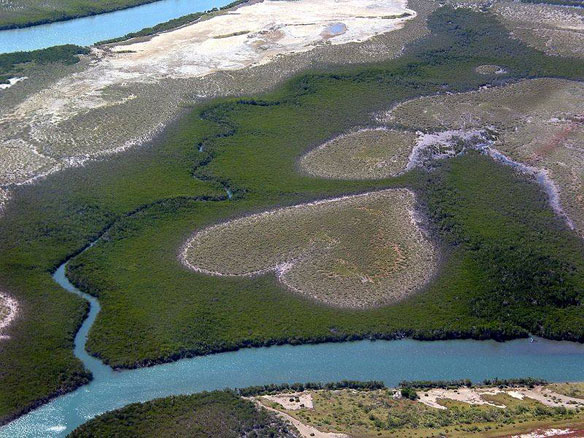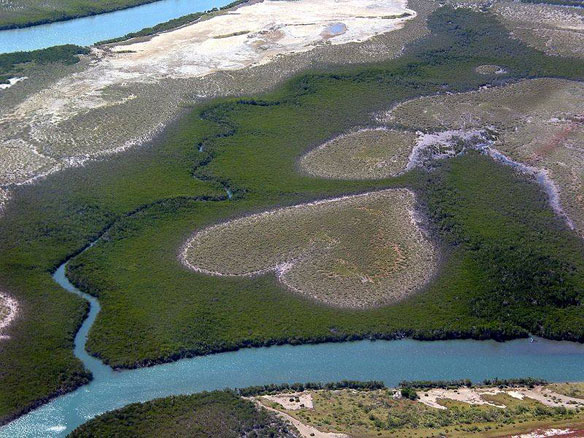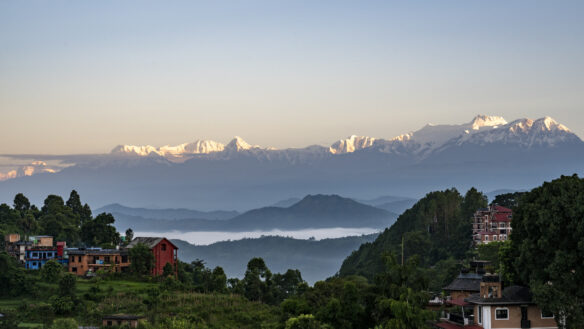
“Le Cœur de Voh,” New Caledonia. Photo source: ©© Wikimedia.
“Le Cœur de Voh,” is a large formation of vegetation within the mangrove swamp, that resembles a heart seen from above.
A mangrove swamp is a semi-aquatic forest common to muddy tropical coastlines with fluctuating tides. At certain spots in the interior that are not reached by seawater except at high tides, vegetation gives way to bare, over salted stretches called «tannes,» such as this one near the town of Voh, where nature has carved this clearing in the form of a heart.”
World famous photographer Yann Arthus-Bertrand contributed to Le Coeur de Voh’s popularity by using a photograph of the ‘heart’ as the cover to his book La Terre Vue du Ciel, Earth from Above, amongst other magnificent aerial photographs of the Earth, such as recently featured in Coastal Care.
Excerpts;
A mangrove is a forest consisting of various species of mangrove trees growing with their bases submerged in water, at the interface between land and sea. They cover more than three quarters of tropical coastlines, that is to say almost 200,000km².
In New Caledonia, they accounts for almost 80% of the island’s western coastline.
They act as a buffer zone between the lagoon and the mountain mining areas, rich in metallic elements (iron, manganese, nickel, chrome and cobalt, nearly all toxic pollutants)…









